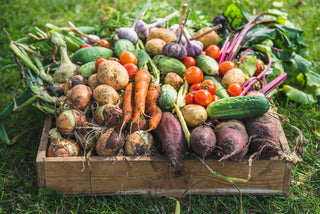Abstract: Traditional farming practices have been the backbone of agricultural systems in Australia for centuries, shaped by the vast landscapes and unique environmental conditions. This essay explores the continued viability of traditional farms in Australia while contrasting their role in high-density countries. It also delves into the challenges posed by diseases in protected cropping systems and their potential impact on modern agricultural practices. Furthermore, it examines how the rise of robotics, changing workforce dynamics, emerging crop values, and alternative methods like aquaponics and hydroponics might reshape the future of farming. While these methods hold promise, they also carry specific limitations, particularly in the context of traditional brassica crops like cauliflower and broccoli.
Introduction: Traditional farming methods have long been synonymous with Australia's agricultural landscape. These practices have thrived in a country known for its expansive rural areas, varied climatic zones, and relatively low population density. However, as the global population continues to grow and urbanisation encroaches on arable land, the role of traditional farming in Australia faces scrutiny. This essay argues that traditional farms in Australia remain a better and more viable option than in high-density countries, owing to the nation's unique geographical and agricultural landscape.
Traditional Farms in Australia:
| Advantages | Description |
|---|---|
| Diverse Geographic Landscape | Australia's vast landmass offers a diverse range of climates and soil types, allowing for a wide variety of agricultural practices. Traditional farms can cater to both livestock and crop cultivation, adapting to local conditions. |
| Sustainability | Traditional farming often involves sustainable practices, such as rotational grazing and dryland farming, which are well-suited to Australia's water-scarce regions. |
| Low Population Density | Australia's comparatively low population density means that traditional farms have ample space to operate without competing for land with urban expansion. |
Challenges in High-Density Countries:
| Challenges | Description |
|---|---|
| Limited Arable Land | High-density countries like those in Europe and parts of Asia face significant limitations in available agricultural land due to urbanisation and population pressure. Traditional farms struggle to find sufficient space. |
| Intensive Farming | High population density necessitates intensive farming practices, often relying on monocultures, which can lead to soil degradation and increased vulnerability to diseases. |
| Protected Cropping and Disease Risks | In high-density countries, protected cropping systems are common to maximise limited space. However, these systems are vulnerable to diseases, and a single outbreak can devastate entire farms, making traditional farming less susceptible. |
Disease Risks in Protected Cropping:
| Risks | Description |
|---|---|
| Vulnerability to Outbreaks | Protected cropping systems, such as greenhouses and hydroponics, create controlled environments ideal for pests and diseases to proliferate. In high-density countries, a disease outbreak can spread rapidly, affecting large portions of the crop. |
| Dependency on Pesticides | To combat diseases in protected cropping, farmers may resort to extensive pesticide use, which can lead to environmental concerns and pesticide resistance. |
| Risk Mitigation | Traditional farms in Australia, due to their size and dispersed nature, have a lower risk of widespread disease outbreaks. Moreover, they can employ a range of disease prevention and management strategies, reducing dependency on chemicals. |
Future Trends and Challenges:
| Trends and Challenges | Description |
|---|---|
| Robotic Innovation | The need to replace human labour, driven by issues like labour costs and a lack of interest in horticulture among the younger workforce, may lead to increased adoption of robotics and automation in farming practices. |
| Shift in Crop Values | The agricultural landscape may witness shifts as emerging crops of higher economic value, driven by changing consumer preferences and international markets, gain prominence. Seed companies might adapt their portfolios accordingly. |
| Alternative Methods | Hydroponics and aquaponics offer resource-efficient approaches to farming, particularly for leafy greens and smaller brassicas. However, traditional brassica crops like cauliflower and broccoli may still require traditional farming methods due to their size and growth frame. |
Conclusion: In conclusion, traditional farms in Australia continue to be a viable and sustainable option, given the nation's expansive landmass, diverse climates, and low population density. However, their role contrasts starkly with high-density countries where land scarcity and intensive farming practices necessitate protected cropping systems. While protected cropping offers benefits in terms of yield and resource efficiency, it also presents significant disease risks. The susceptibility of these systems to disease outbreaks underscores the enduring relevance of traditional farms in Australia's agricultural landscape. Traditional farming practices, rooted in sustainability and adaptability, remain a resilient and essential component of the nation's food production system. As we look to the future, robotics and changing crop values may play pivotal roles in shaping the evolution of agriculture in Australia and beyond. Additionally, while alternative methods like hydroponics and aquaponics hold promise for certain crops, traditional farming will likely remain essential for larger brassica crops due to their unique growth requirements and frame.




